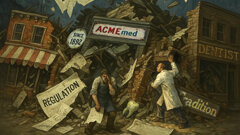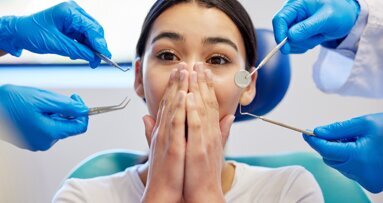CHICAGO, US: Dentistry is undergoing a generational and gender shift. As highlighted in The U.S. Dentist Workforce, a new report from the American Dental Association (ADA) Health Policy Institute, the dental workforce is transitioning towards a younger demographic, and women are making up an increasing share of practitioners. This transformation has profound implications for workforce planning, patient care and the culture of the profession worldwide.
The face of dentistry is changing. A new generation of practitioners, many of them women, is steadily reshaping the profession and replacing the traditional male-dominated model. Dental schools across North America and Europe have, for more than a decade, reported that women account for the majority of their graduates. As these graduates move into practice, the workforce naturally reflects this balance.
One of the most striking aspects of this shift, according to the ADA report, is the growing number of female dentists under the age of 40. This trend mirrors wider social and educational developments in which professions once reserved for men are now fully open to women. This generational transformation is not only about numbers but also about values. Younger dentists bring with them different expectations regarding career flexibility, professional culture and work–life balance. Part-time practice, career breaks and collaborative working models are increasingly being normalised. These patterns challenge traditional assumptions about dentistry as a lifelong, full-time career centred on solo practice ownership. Employers and policymakers will need to adapt by providing flexible pathways and supporting diverse career structures.
For patients, a more diverse workforce can foster stronger trust and improve access to care. According to the report, when the dental profession reflects the communities it serves, patient satisfaction and engagement rise. Younger dentists also tend to more readily adopt technical and clinical innovations, such as digital dentistry and preventive care strategies, which can improve outcomes and enhance efficiency.
This is not only an American story. A Canadian Dental Association publication points to the long-term rise of female practitioners and notes that women have formed the majority of dental students since 2010. International research such as a recent global overview of women in dentistry confirms that gender disparities are narrowing across many countries, though representation in leadership positions and specialist fields remains unevenly distributed. A survey across 81 countries of 3,232 female dentists, all members of FDI World Dental Federation, highlights, however, that women remain underrepresented in professional dental organisations, with few holding positions as officers, board members or presidents. Family responsibilities, particularly childcare, continue to shape perceptions and create barriers to leadership roles, especially in academia and professional associations.
Despite progress, challenges remain. Leadership positions and specialist areas within dentistry are still disproportionately occupied by men, suggesting that the path to true gender parity is not yet complete. Supporting women into senior roles will be vital if the profession is to harness the full potential of its changing demographic. Likewise, building inclusivity across all dimensions of diversity will be just as important in creating a workforce fit for the future.
Dentistry is entering a new era defined by youth, gender diversity and innovation. What was once a male-led profession is now being reimagined by women, whose presence and leadership will continue to grow in the years ahead. For dental schools, professional associations and policy bodies, the challenge will be to support this evolution with structures that value flexibility, inclusivity and long-term sustainability.
Editorial note:
List of references:
- ADA Health Policy Institute. The U.S. dentist workforce. Chicago: ADA Health Policy Institute; 2025 Aug [cited 2025 Sep 24]. Available from: https://www.ada.org/-/media/project/ada-organization/ada/ada-org/files/resources/research/hpi/US_dentist_workforce_2025.pdf.
- Velázquez-Cayón RT, Martín Balbuena P. Women in dentistry: from historical milestones to leadership in the sustainable development goals of the 2030 agenda. Adm Sci. 2025 May;15(5):182. doi: 10.3390/admsci15050182.
- Campus G, Maclennan A, von Hoyningen-Huene J, Wolf TG; FDI Section Women Dentists Worldwide Collaboration Group; Aerden M, Benyahya I, Bonaventura J, Brolese ELK, Linton JL, Gogilashvili K, Marron-Tarrazi I, Ilhan D, Iwasaki M, Grzech-Lesniak K, Perlea P, Thabet N. The presence of women in the dental profession: a global survey. Int Dent J. 2024 Feb;74(1):110–18. doi: 10.1016/j.identj.2023.07.010.
Topics:
Tags:
CHICAGO, US: Fewer young dentists are buying practices early in their careers—but that does not mean they are abandoning the idea of ownership altogether....
LONDON, England: Like other areas of society that have come under scrutiny for various kinds of gender inequality and exploitation, dentistry too is now ...
LONDON, England: The UK dental crisis is a highly significant public health issue, having escalated in recent years owing to continued reductions in ...
Greenville, N.C., US: As Western societies increasingly come to terms with the inequities that have stained their histories, addressing the systematic ...
NEW YORK, US: The Oral Health Workforce Research Center (OHWRC) is responsible for providing research on the oral health workforce in the US and assisting ...
Live webinar
Wed. 14 January 2026
12:00 pm EST (New York)
Dr. Théo Laplane, Dr. Robert Gottlander DDS
Live webinar
Fri. 16 January 2026
12:00 pm EST (New York)
Live webinar
Mon. 19 January 2026
1:00 pm EST (New York)
Philipp Kopp, Michael Seeber
Live webinar
Thu. 22 January 2026
9:00 am EST (New York)
Prof. Judith Jones D.D.S; M.P.H., Prof. Kakuhiro Fukai D.D.S., Ph.D, Dr. Bathsheba (Bethy) Turton
Live webinar
Thu. 22 January 2026
2:00 pm EST (New York)
Dr. Nicola M. Grande DDS, PhD
Live webinar
Wed. 28 January 2026
8:00 am EST (New York)
Live webinar
Wed. 28 January 2026
11:00 am EST (New York)
Prof. Dr. Jan-Frederik Güth



 Austria / Österreich
Austria / Österreich
 Bosnia and Herzegovina / Босна и Херцеговина
Bosnia and Herzegovina / Босна и Херцеговина
 Bulgaria / България
Bulgaria / България
 Croatia / Hrvatska
Croatia / Hrvatska
 Czech Republic & Slovakia / Česká republika & Slovensko
Czech Republic & Slovakia / Česká republika & Slovensko
 France / France
France / France
 Germany / Deutschland
Germany / Deutschland
 Greece / ΕΛΛΑΔΑ
Greece / ΕΛΛΑΔΑ
 Hungary / Hungary
Hungary / Hungary
 Italy / Italia
Italy / Italia
 Netherlands / Nederland
Netherlands / Nederland
 Nordic / Nordic
Nordic / Nordic
 Poland / Polska
Poland / Polska
 Portugal / Portugal
Portugal / Portugal
 Romania & Moldova / România & Moldova
Romania & Moldova / România & Moldova
 Slovenia / Slovenija
Slovenia / Slovenija
 Serbia & Montenegro / Србија и Црна Гора
Serbia & Montenegro / Србија и Црна Гора
 Spain / España
Spain / España
 Switzerland / Schweiz
Switzerland / Schweiz
 Turkey / Türkiye
Turkey / Türkiye
 UK & Ireland / UK & Ireland
UK & Ireland / UK & Ireland
 Brazil / Brasil
Brazil / Brasil
 Canada / Canada
Canada / Canada
 Latin America / Latinoamérica
Latin America / Latinoamérica
 USA / USA
USA / USA
 China / 中国
China / 中国
 India / भारत गणराज्य
India / भारत गणराज्य
 Pakistan / Pākistān
Pakistan / Pākistān
 Vietnam / Việt Nam
Vietnam / Việt Nam
 ASEAN / ASEAN
ASEAN / ASEAN
 Israel / מְדִינַת יִשְׂרָאֵל
Israel / מְדִינַת יִשְׂרָאֵל
 Algeria, Morocco & Tunisia / الجزائر والمغرب وتونس
Algeria, Morocco & Tunisia / الجزائر والمغرب وتونس
 Middle East / Middle East
Middle East / Middle East










































To post a reply please login or register